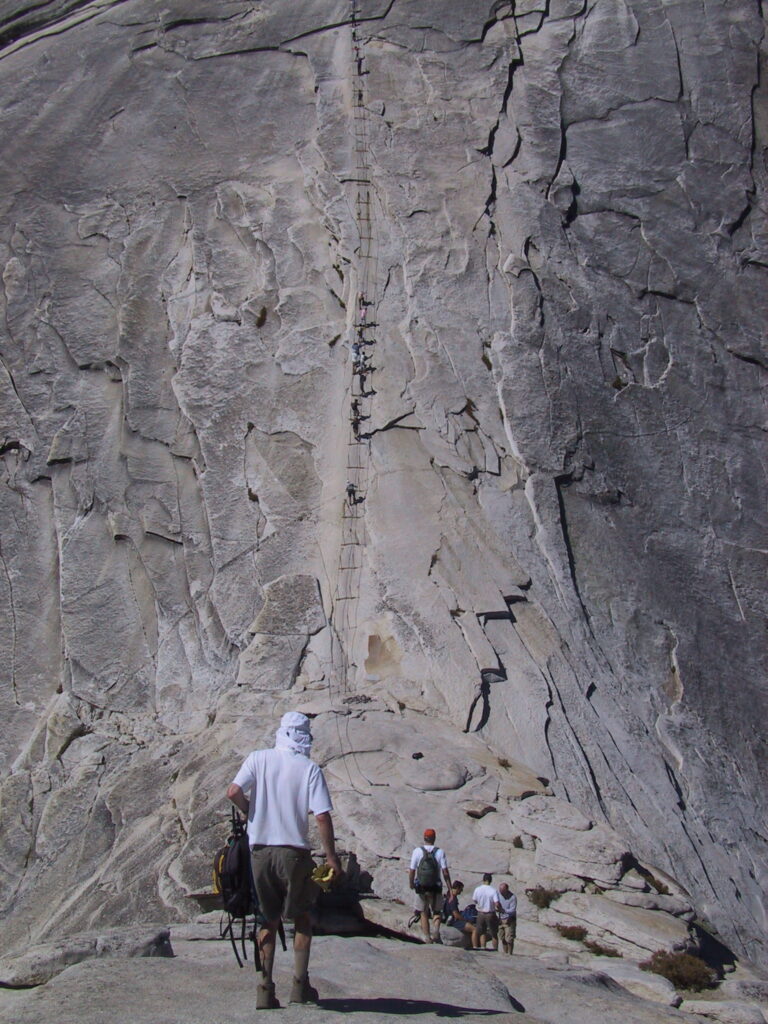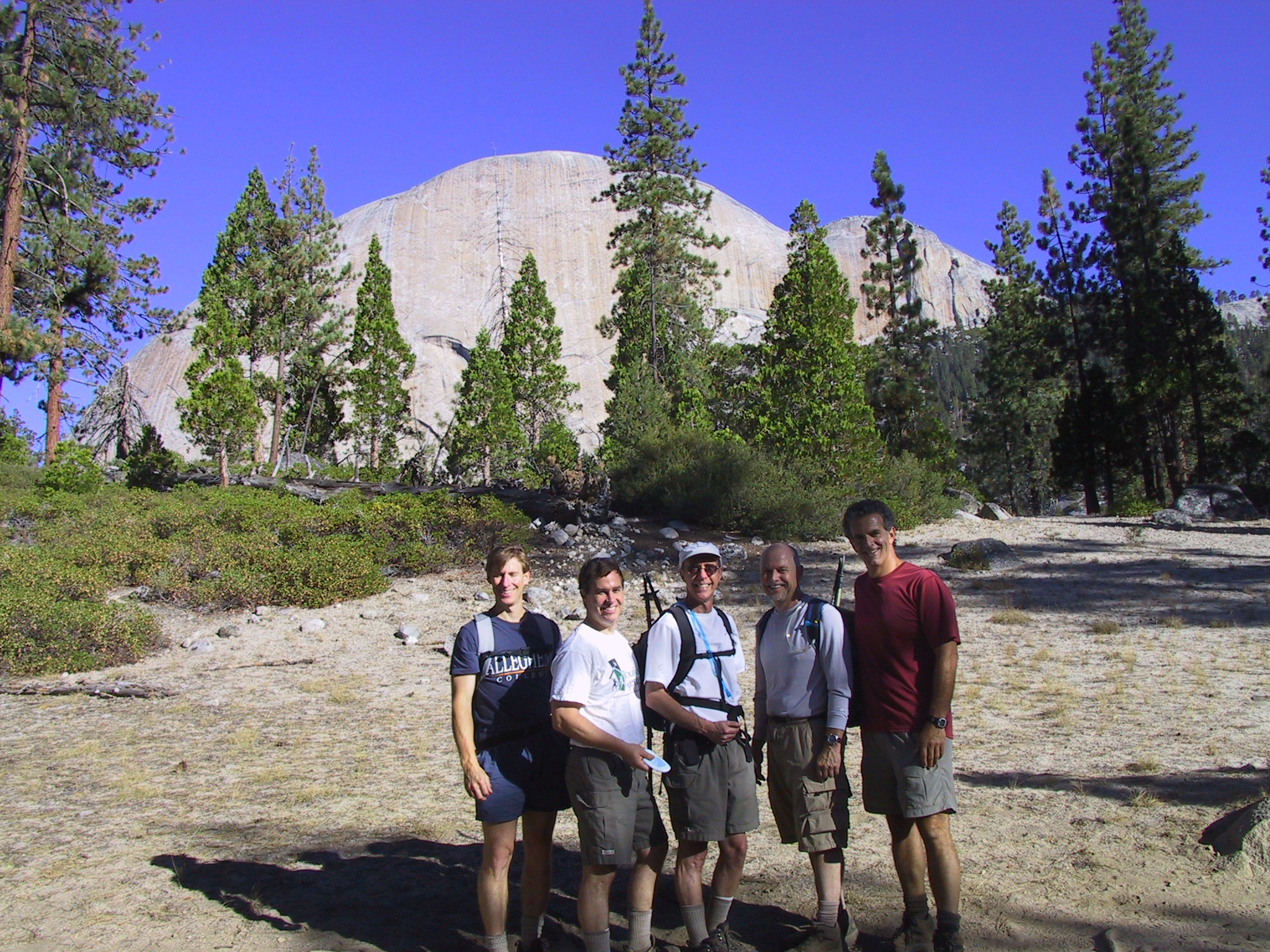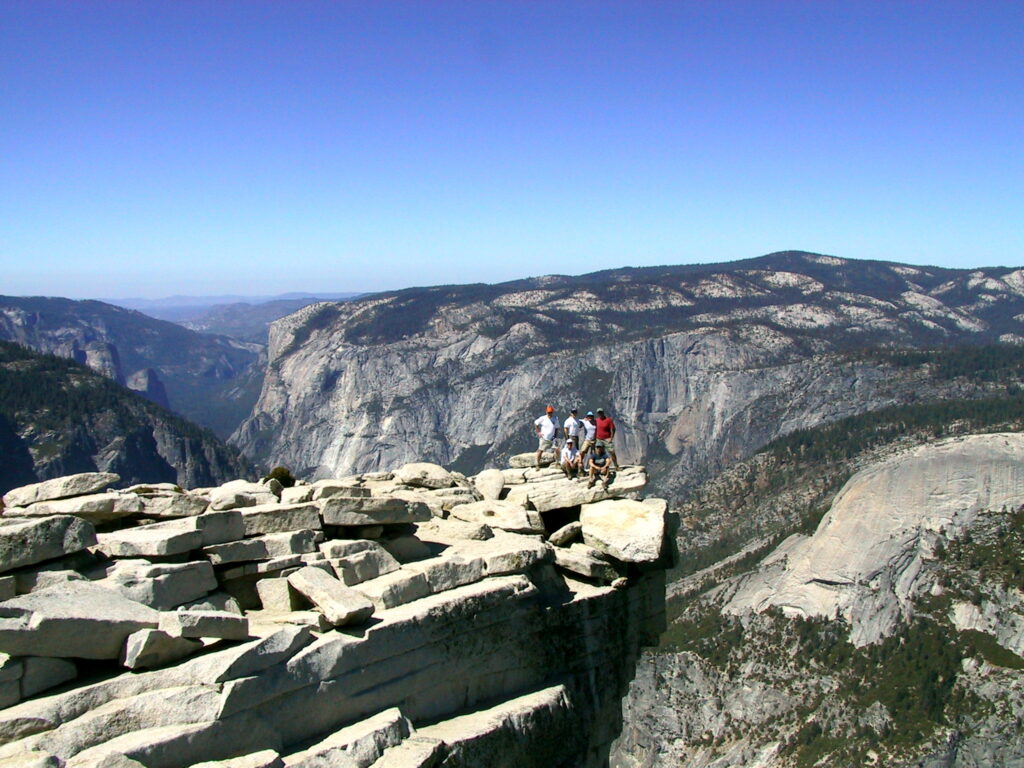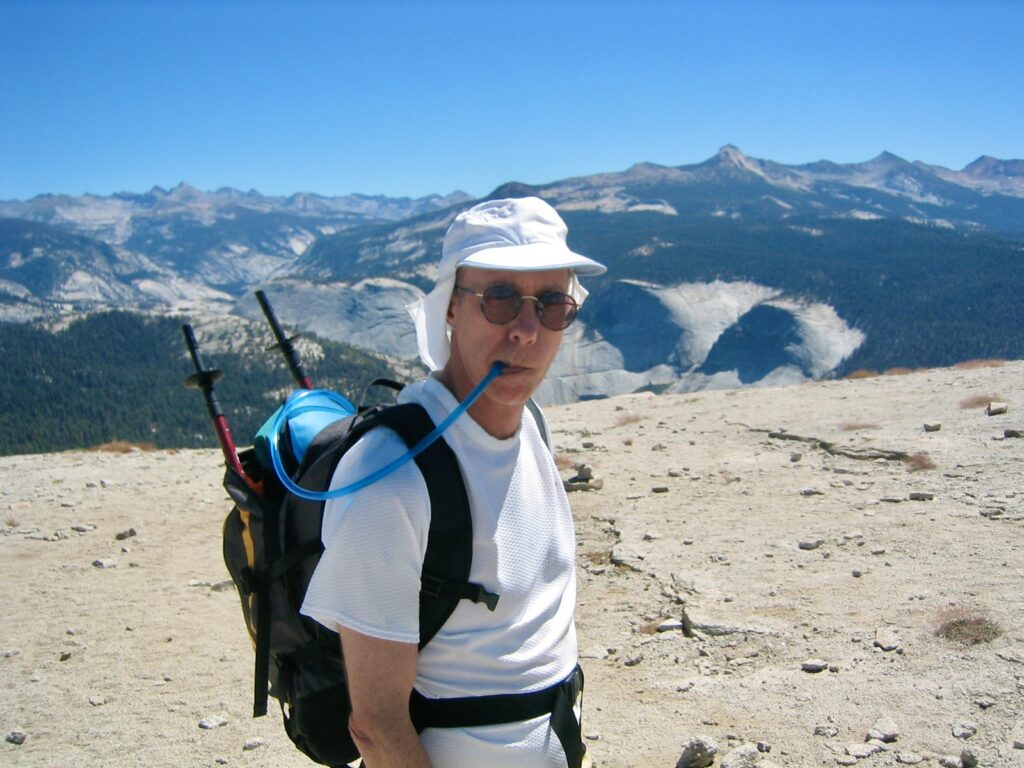Heavy Breathing on Half Dome
And Other Ways To Stay In Shape For Diving
By Gil Zeimer

This article originally appeared in the December 2008/January 2009 issue of Dive Pacific Magazine.
Why did I trek 18.2 miles (29 kilometers) round-trip to one of California’s most celebrated mountains with five of my besties? Why did I risk heat stroke, dehydration, and fatigue hiking in 86o F. (30o C.) heat for nine hours? Because it’s there?
Nope. This was an opportunity to scale the 8,842-foot (2,695-meter) mountain known as Half Dome, one of the most famous granite peaks in Yosemite National Park, let alone the world. I wanted to join hundreds of people who make the daily summer season pilgrimage to this hiking mecca, a four-hour drive east of San Francisco (about 200 miles or 322 kilometers).
Most of all, I wanted to achieve this physical feat at the same age my father survived his first heart attack. This hike also represented a challenging way to stay in shape for diving.
New Year’s Resolutions & Exercise Go Hand-in-Hand.
Most of us have a New Year’s Resolution to lose 10 or 20 pounds (5 or 10 kilos). So getting into better shape is a heart-smart way to start the New Year. More than one-third of deaths annually in the U.S. is attributed to cardiovascular disease.(1) Most diving deaths are usually caused by overexertion, stress and physical collapse from heart attacks.
Generally, we’re not exercising enough for our dive vacations. We assume diving is a low stress, minimal exertion sport. It’s not. When we get in the water, we can find ourselves out of breath, out of shape, and out of luck. So it’s appropriate to set a goal of exercising.
Two Months of Training for One Long Day’s Journey Into Height.
I was a jogger for 25 years. My longest run was a half- marathon of 13.1 miles (20.96 kilometers). I now hike on a hilly two-mile (three-kilometer) trail, four times per week for the past 10 years. But I knew that alone wouldn’t prepare me for a steeper trek nine times as long.
So two months in advance, our group started a strenuous regimen of 6.0 to 13.5-mile (10- to 22-kilometer) weekend hikes to get our legs, lungs, bodies, and brains ready for the assault. Fifty-five years young at the time of this trek, I was the oldest hiker of our group. Four have a family history of heart disease; three have asthma.
On the day of the event, my Half Dome Half-Dozen hikers rose early, ate hearty breakfasts lit by headlamps, and hit the trail by 6:30, enduring a 3,200-foot (975-meter) elevation gain that we’d encounter over the next 18.2 miles (29 kilometers), first up, then down. A pedometer measured 28,817 steps. a gain of 17 vertical feet (6 meters) per minute during the first half.
As we walked through the trails from the valley floor, we began our hours of heavy breathing –– trying to catch our collective breath in the increasingly thinner air as we experienced oxygen debt.
Hiking past the cascading Vernal and Nevada Falls, the early morning mist floated over us, cooling our bodies for the long hike ahead. Up, up, up we climbed. To beat the day’s heat –– and the day’s crowd to the summit –– we planned to hit the summit by 11am.

The Final Assault: A Cable Stairway to Heaven.
Four hours into the hike, we reached Quarter Dome. We looked up a 900-foot-high (275-meter high) cliff with an eye-popping 60-degree incline to view the summit. Here, many hikers take one look, shake their heads, and turn around.
Not us. We had our eyes on the prize, so we literally pulled ourselves –– Batman-style –– up the final section of metal cables and railroad ties –– step-by-step, up and over the top of the 8,842-foot (2,695-meter) summit.
“Top of the World, Ma!”
After reaching the top, we relaxed on a rock pile to enjoy the 360-degree view of Yosemite Valley, devoured our lunches, and drank much-needed fluids to replenish what we’d lost from sweat and exertion.
On the vast Half Dome summit, we saw a surprising variety of hikers, including a 10-year-old girl and her father, some senior hikers, and scores of visitors from England, Denmark, Germany, Japan, Scotland, and even New Zealand!
We then began our long descent. Surprisingly, it took just as long to walk downhill –– without the heavy breathing –– as up. The terrain was just as difficult to negotiate, but our hiker’s poles provided balance. The step-by-step, hands-on-rails strides down the cable rails went a bit faster than the ascent, but we were extremely careful not to trip!
A few words about dehydration: I finished the day by drinking nearly 5 fluid quarts (5.3 liters) of water and Gatorade. In spite of that, I still lost about 5 lbs. (2.3 kilos) of weight by burning over 4,700 calories!(2)
A Look Back Up The Mountain.
Running a half-marathon took me about two hours. At about 18.2 miles (29 kilometers), with elevation gain, altitude, and a heavy daypack, this was definitely the most physically demanding feat I’ve ever accomplished. It was beautiful, challenging, exhausting, and exhilarating.
But would I do it again? Most likely. Above all, I can feel proud that I survived an exhausting hike at the age my father almost died from a heart attack.
Five Similarities Between Hiking and Diving.
I’ve compiled a list of how these two diverse sports are actually similar:
1. Gear Check With Your Buddy –– We constantly asked our buddies to unzip a pocket of our daypacks to get snacks, fluids, or clothing.
2. Life Sources on our Backs –– Each of our external liquid bladders had long drinking tubes, similar to a regulator.
3. The Sounds of Breathing and Water –– During most of the climb, all we could typically hear was our breathing. In some places, we also heard waterfalls.
4. Safety Rest Stops –– As in diving, we rested often to avoid over-stressing our hearts and lungs in the heat.
5. Stay in Shape Year-Round –– We trained seriously for this strenuous hike into heat and altitude, just as you’d train in a pool or ocean swimming for diving.
ABOUT THE AUTHOR
Gil Zeimer of Tiburon, CA, loves to dive below sea level when he’s not hiking above it.
1 AHA Website: http://www.americanheart.org/presenter.jhtml?identifier=4478
Cardiovascular Disease Statistics
Claimed 931,108 lives in 2001 (38.5 percent of all deaths or 1 of every 2.6 deaths).
2 http://www.changingshape.com/resources/calculators/caloriesburnedcalculator.asp
(Beginning weight was 145 lbs., moderate backpacking x 540 minutes =4735.44 calories burned)







Comments are closed.